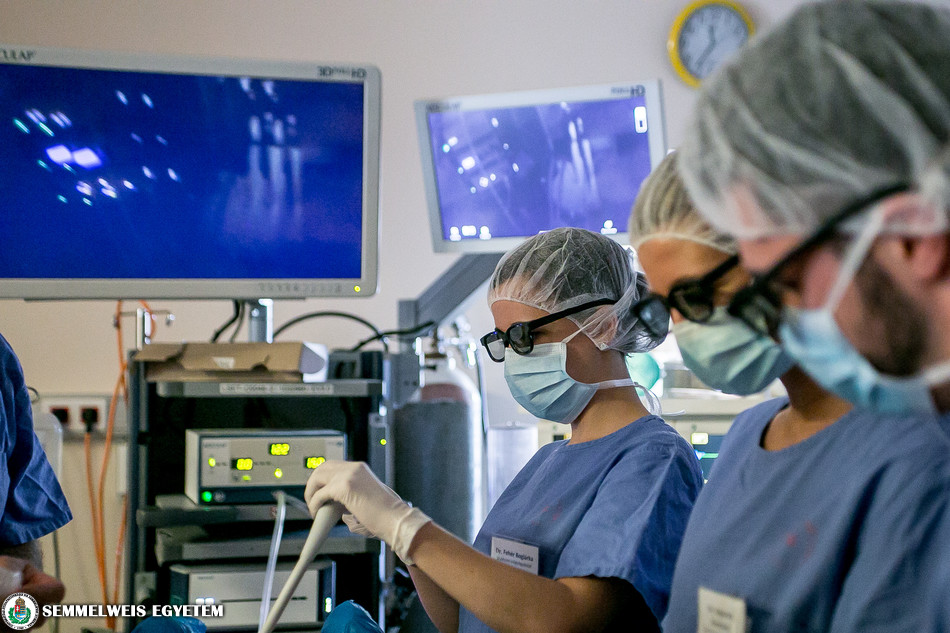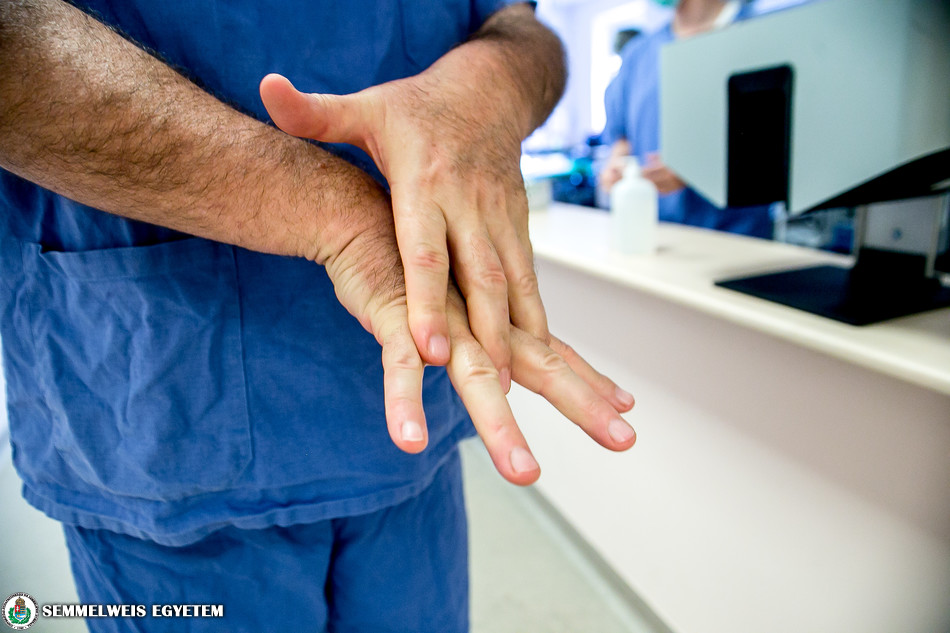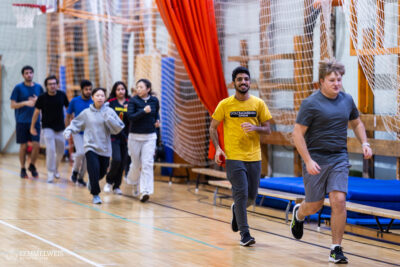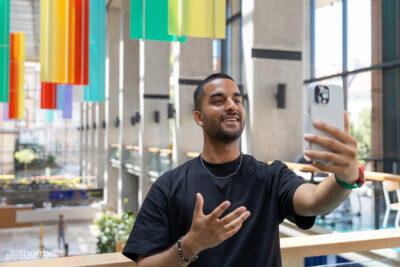Laparoscopic surgical practice with 3D technique, instrumental control of scrubbing and a workshop on the surgical benefit of fluorescence staining under the direction of the Japanese surgeon professor, Masashi Yoshida. These special programmes have recently been part of the skill training programme organized for residents by the Department of Surgical Research and Techniques. The head of the department, Dr. György Wéber, emphasized that they are striving to introduce, beyond the mandatory programmes, more innovations and the top possibilities of the profession to future specialists working in hands-on professions.
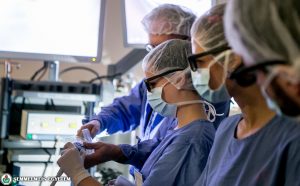 With the three-dimensional laparoscopic technique, the surgeon wearing a pair of 3D glasses will be able to visualize the internal organs in a realistic way, and the depth can also be perceived, explains Dr. György Wéber, director of the Department of Surgical Research and Techniques, in connection with the fact that the group of residents participating in the department’s skill training could try this latest technology. 3D technology in laparoscopy means the future, so it is important for future professionals to get acquainted with it, said Dr. György Wéber, adding that it is very useful for developing skills as well, facilitating the acquisition of surgical and sewing techniques. The 3D device was made available to the institute by a German company for a transitional period at the initiative of the director, so two resident groups participating in the mandatory one-month skill training can try it in the institute’s “George Berci” Surgical Training and Research Laboratory in Herceghalom.
With the three-dimensional laparoscopic technique, the surgeon wearing a pair of 3D glasses will be able to visualize the internal organs in a realistic way, and the depth can also be perceived, explains Dr. György Wéber, director of the Department of Surgical Research and Techniques, in connection with the fact that the group of residents participating in the department’s skill training could try this latest technology. 3D technology in laparoscopy means the future, so it is important for future professionals to get acquainted with it, said Dr. György Wéber, adding that it is very useful for developing skills as well, facilitating the acquisition of surgical and sewing techniques. The 3D device was made available to the institute by a German company for a transitional period at the initiative of the director, so two resident groups participating in the mandatory one-month skill training can try it in the institute’s “George Berci” Surgical Training and Research Laboratory in Herceghalom.
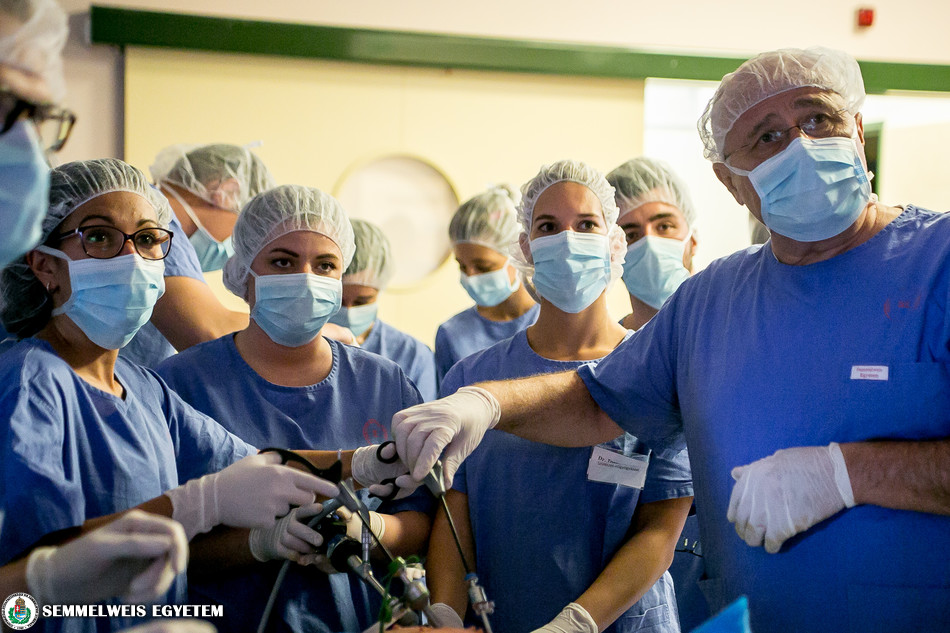 In addition, the participants of the autumn training sessions are also assisted by a state-of-the-art instrument for pre-operative scrubbing, which shows whether washing hands was indeed thorough. Students can check this by putting their hands in the device. In the case of a perfectly clean hand, the image taken of the hand will be green; however, if the skin is not completely clean, red spots appear on the image. Dr. György Wéber says that they would like to draw attention to the importance of thorough handwashing, the need for which is shown by the fact that in the latest test, five of the 16 residents did not scrub properly first. The device was provided by the developer company, which had previously participated in the testing process as well.
In addition, the participants of the autumn training sessions are also assisted by a state-of-the-art instrument for pre-operative scrubbing, which shows whether washing hands was indeed thorough. Students can check this by putting their hands in the device. In the case of a perfectly clean hand, the image taken of the hand will be green; however, if the skin is not completely clean, red spots appear on the image. Dr. György Wéber says that they would like to draw attention to the importance of thorough handwashing, the need for which is shown by the fact that in the latest test, five of the 16 residents did not scrub properly first. The device was provided by the developer company, which had previously participated in the testing process as well.
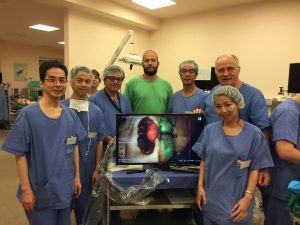 At the end of September, the Japanese surgeon professor, Masashi Yoshida, led a workshop for a group of residents on fluorescence guided surgery. After a short theoretical introduction, he presented intestinal resections of different lengths, during which he checked the blood circulation in the given intestinal tracts and the intestinal connections, using the indocyanine green fluorescens (ICG) material. The contrast agent that can be delivered by venous injection allows the surgeon during operation to quickly and unambiguously assure if an intestinal tract is dead, needs to be cut or is viable. Where there is blood circulation, the material injected will give colour to the intestinal tract under infrared light. During the demonstration, a new contrast agent, the fluorescein in the visible range, was also used. The purpose of the course was to draw attention to the importance of ICG examination, to demonstrate its technique and to teach its intraoperative use, Dr. György Wéber pointed out.
At the end of September, the Japanese surgeon professor, Masashi Yoshida, led a workshop for a group of residents on fluorescence guided surgery. After a short theoretical introduction, he presented intestinal resections of different lengths, during which he checked the blood circulation in the given intestinal tracts and the intestinal connections, using the indocyanine green fluorescens (ICG) material. The contrast agent that can be delivered by venous injection allows the surgeon during operation to quickly and unambiguously assure if an intestinal tract is dead, needs to be cut or is viable. Where there is blood circulation, the material injected will give colour to the intestinal tract under infrared light. During the demonstration, a new contrast agent, the fluorescein in the visible range, was also used. The purpose of the course was to draw attention to the importance of ICG examination, to demonstrate its technique and to teach its intraoperative use, Dr. György Wéber pointed out.
The one-month “skill training” course of the Department of Surgical Research and Techniques is mandatory for all residents practising any branch of surgery. Dr. György Wéber emphasized that during the trainings organized in the Nagyvárad tér Theoretical Building and in the centre in Herceghalom, they strive to introduce, beyond the compulsory programmes, more innovations and the top possibilities of the profession to future specialists.
Pálma Dobozi
Photo: Attila Kovács, Semmelweis University
Translation: Diána Módos

